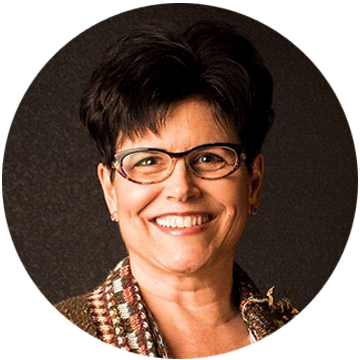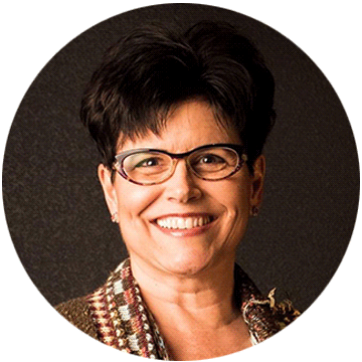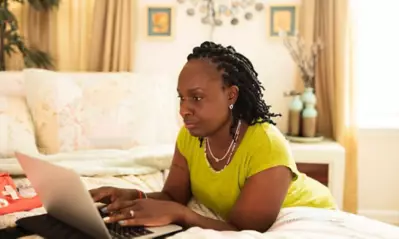Burnout busters: How to do spring break (and life) as an adult student

Written by Laurie Davies

Half the world may be looking forward to that glorious spring week when Sun Belt trips and zero responsibility beckon. But for adult students, spring break means something altogether different. The kids are off school, work doesn’t stop, and you may even have homework and deadlines for your own classes. What’s an adult student to do?
We’ve got a multiple-choice quiz for you, and we’ll save you any test-taking anxiety by telling you the answer right out of the gate.
A) Connect with other people.
B) Do something for you.
C) Both of the above.

The answer is C, and James Cook, PhD, counseling core faculty and residency coordinator for University of Phoenix’s College of Social and Behavioral Sciences , has some ideas on how to make these principles not only carry you through spring break, but also move into the rhythm of your life.
I need a (spring) break!
At University of Phoenix, the average age of new students is 38, almost 80% of students are employed, and 63% have dependents. This is not a picture of the “traditional” student. So, it’s no surprise that spring break doesn’t feel traditional either.
Cook recommends taking a different approach with spring break. “When we say we need a break, what we’re really talking about is burnout with exhaustion that’s brought about by stress,” Cook says. “We see this in our students because they have so many roles they’re playing in their lives.”
After working as a therapist and being a college instructor for almost three decades, Cook has whittled down his list of burnout strategies to two key areas — A and B on the list above.
“You don’t have to wait for spring break to take care of yourself,” he says. In fact, you won’t have to limp into spring break with ideas about recharging if you’re fueling your life in an ongoing way with a sense of belonging and self-care. Read on to gather some practical ideas for you, the kids and anyone else you’re caring for.
We’re better together
With spring break around the corner, the natural rhythm is to want to hop in the car and go. But that’s not life right now. In fact, you might be limping into the week overwhelmed by the demands of life. So, what can you do to combat burnout?
Make low-budget plans with friends.
Maybe you didn’t see that one coming.
“Feelings of loneliness and disconnection often lead to burnout,” Cook says. “We need to find things that fuel connection.” This is especially true for students in online classes.
Your ideas don’t need to be budget-busters to get the job done. Sometimes the simplest, cheapest or even corniest activities can release the pressure valve on our lives. So, gather up your friends (and, if applicable, your kids’ friends) and plan:
- A park outing and picnic
- DIY art outing
- Scooter or kayak rental at a local park or pond
- Outdoor movie or concert
- A zoo or museum outing (check for no-cost days!)
- A historical tour of your city or town
- A volunteer outing at your local food bank or other nonprofit
- A board game, video game or backyard game tournament
Whatever you plan, the added benefit (in addition to the fun) is that you’ll be dialing down your stress. “Just being with other people lifts our mood. We’re not thinking about other things that stress us out. Our anxiety is less when we’re doing these fun things,” Cook says.
Do something just for you
Now that your tank is full because you’ve spent time with people, don’t neglect to do something just for you. Studying or finishing a paper doesn’t count. In an ongoing way, as much as your schedule and budget allow, it’s important to grab even little islands of time to focus on self-care.
This can look like:
- Taking a yoga class
- Walking or bicycling
- Going to church
- Watching birds
- Reading a book
- Spending time enjoying a long-neglected hobby
- Taking photos in an urban or rural setting that’s new or interesting to you
- Planning a staycation (yes, even if you spend it cleaning out the garage, if the stuff is stressing you out)
“Many adult students are a lot of things to a lot of people. They don’t think about themselves and who they are. This is especially important for mothers, fathers or caregivers for those who are sick,” Cook says.
Doing something for yourself could also mean going to therapy, or, if you’re a University of Phoenix student, exploring the life coaching and counseling resources available to you through the Life Resource Center .
We sometimes talk ourselves out of seeing a counselor because of the cost of time or money. “But the cost of not talking through things can be the cost of relationships or our health,” Cook says. “In the end, it won’t matter how many ceramic pieces you paint if you have things that need to be worked through.”
So, what’s it going to be?
Do you want to limp into spring break burned out? Or plan a trip you might not enjoy right now if you’re navigating school and work too? Or do you want to grab a few quick wins from the ideas above (or your own!) and lean into this season of life with richer connections, less burnout and stronger footing?
“We may have to step outside our comfort zone. But if we can find new ideas that work for us, and take effort and action to recharge, we’ll reduce our stress,” Cook says. So, pick one thing from each category — something to foster community and something you do just for you — and spring into that.
That could lead you to the best spring break of all.

ABOUT THE AUTHOR
A journalist-turned-marketer, Laurie Davies has been writing since her high school advanced composition teacher told her she broke too many rules. She has worked with University of Phoenix since 2017, and currently splits her time between blogging and serving as lead writer on the University’s Academic Annual Report. Previously, she has written marketing content for MADD, Kaiser Permanente, Massage Envy, UPS, and other national brands. She lives in the Phoenix area with her husband and son, who is the best story she’s ever written.
This article has been vetted by University of Phoenix's editorial advisory committee.
Read more about our editorial process.
Read more articles like this:



